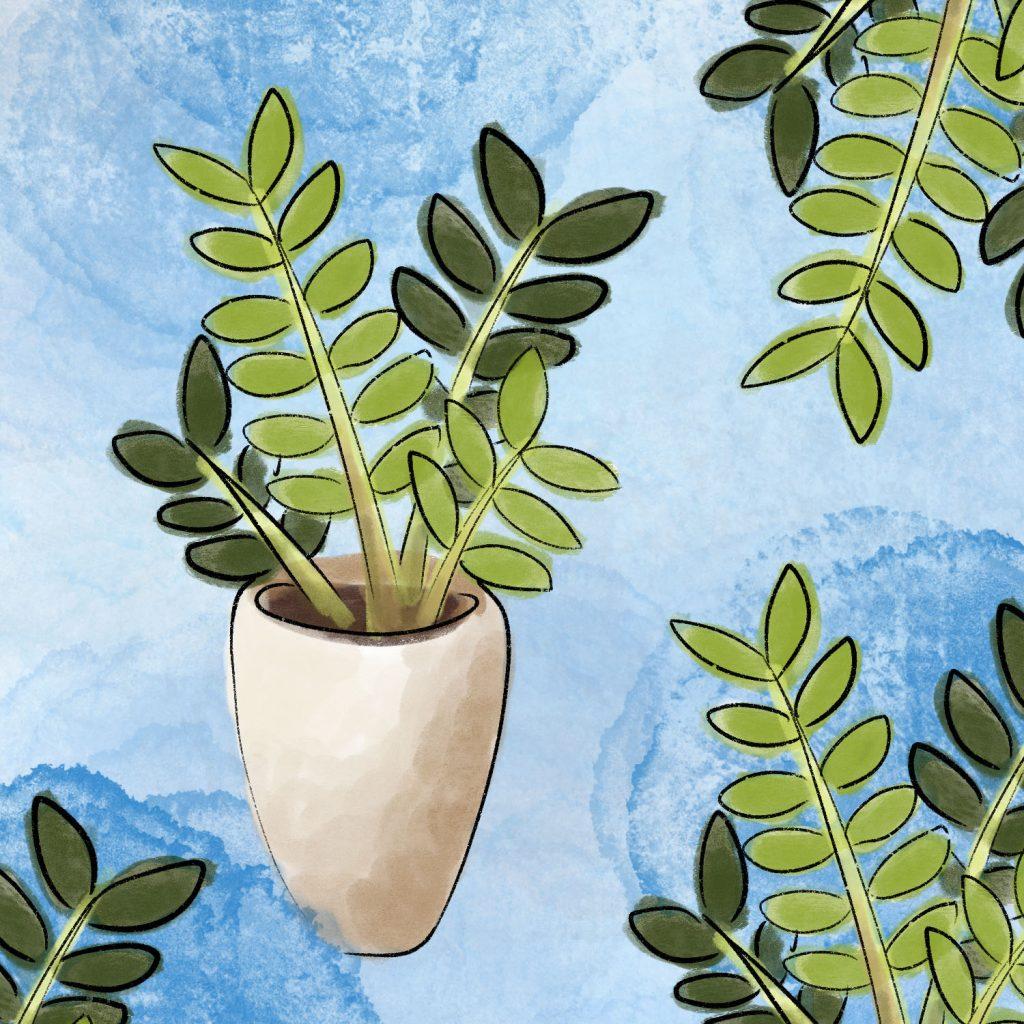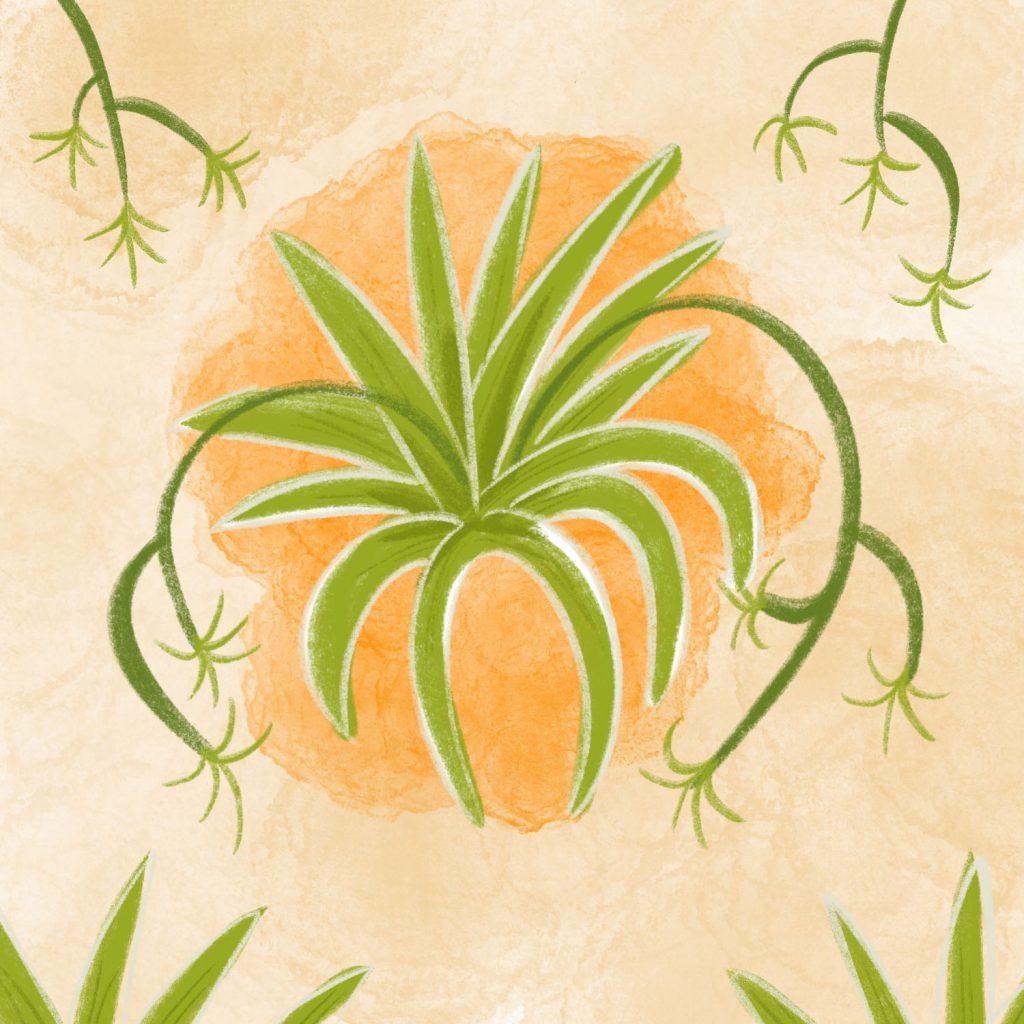Have you ever adopted a new plant baby only to discover the green thumb you thought you had turned out to be a brown thumb after all? Have you ever found yourself overwatering your succulents because you just loved them too much? No need to worry, here’s a list of top ten houseplants that even you can keep alive.
Though a word of warning, some of these plants are toxic if they’re ingested, so make sure to put them in out of the way places if you have pets or children around.
A snake plant is decorative and beneficial to your environment! The snake plant is widely considered to be a good air purifier, and it’s extremely hardy, so you’ll have a hard time killing it. The snake plant is a tabletop plant (or windowsill plant if that’s more your style). To care for it, just dust off its leaves once in a while, keep it in moderately bright or filtered light, and water it once every week or so. Though it’s hardy, the snake plant is prone to root rot, so it is especially important to make sure your pot has drainage holes.

The go-to for malls and doctors offices everywhere, the ZZ plant thrives on inattention and still looks perfect doing it. The glossy leaves of this plant only require a light cleaning once in a while, and it can live in low-to-moderate light. You can water these tenacious plants every 2-3 weeks, and it will stay happy as long as its roots aren’t waterlogged. The ZZ plant is versatile and can be a floor or tabletop plant, so put it wherever your heart most desires.
If any of your plants experience waterlogging, it’s best to replace the waterlogged soil with fresh soil then cut off any brown or mushy roots. To avoid waterlogging, use a pot with drainage holes.
This flowering succulent has the ability to produce aloe with the added show-stopping orange and bright red flowers that bloom on the plant in the spring and summer. Like most succulents, the hedgehog aloe does best when it’s watered once every week or so, and it thrives in bright light. This adaptable plant can be grown and placed anywhere as long as the pot has several drainage holes to fend off that pesky root rot that is the downfall of so many tough plants.
Devil’s ivy is actually quite an angelic plant, eliminating pollutants like formaldehyde and benzene from the air. It’s also perfect for a room that might not have all that much natural light, as it prefers indirect light and shady areas. This plant requires little care beyond a good watering every 1-2 weeks, maybe a light brushing off of the leaves, and a nice pot with lots of drainage holes. Devil’s ivy is a climbing or hanging plant and is welcome for pruning and propagating once it starts getting a little long.
These bright and fun plants are the perfect pal for a new plant parent. They are forgiving of even the most inattentive watering and even prefer it. Just give them a good watering every week or so, and they’ll keep on growing. When your spider plant is fully matured, it could start blooming in the spring with little white flowers and produce spiderettes, which can be potted and give you whole new spider plants to take care of with your, surely, green-by-now thumb! Spider plants prefer bright, indirect light, and you shouldn’t worry if they get brown tips because that’s just their way of saying that they have a little too much fluoride in their water. Try putting it outside to drink up some rain if the brown tips get bad, your spider plant will thank you.

They may not technically be real lilies, but they are really peaceful. Once you’re mastered caring for your other plant children, try your hand at a peace lily. These plants require a bit more attentive watering but will let you know if they start to get thirsty by drooping, bouncing back quickly afterward. Just give them a good watering about once a week with a few light spritzes on the leaves every few days and your peace lily will stay happy. In addition to clearing the air of some toxins like formaldehyde and carbon monoxide, the peace lily also thrives on low light or bright fluorescents, which make it a perfect office and dorm plant.
If you didn’t already have too many plants, how about one that will thrive in your bathroom? Yes, the air plant is the perfect bathroom buddy. It doesn’t like being planted in soil, so just place it in a container in your bathroom, and it will be able to get enough water from your steamy showers. If it’s looking a little thirsty, just put it in a bowl full of water for a few hours, and dry it off before putting it back in its bowl. Once it grows up enough, the air plant will also produce pups, so you have more buddies to keep you company! Make sure it doesn’t dry out next to a heater or air-conditioning unit and that it isn’t bathed in direct light all day. All the air plant needs is mist, air and your love.
This cast-iron plant has a cast-iron will to live. This plant is widely known to be able to survive harsh conditions, and you will most assuredly be able to get it to thrive somewhere with low light and an iffy watering schedule. If you like, you can give it a dusting while you’re watering it once every 1-2 weeks; its wide leaves gather dust and dirt quickly. The cast-iron plant isn’t showy by nature, but it certainly adds a bit of green to your life.

Just like the devil’s ivy and the peace lily, the cornstalk plant’s name is a misnomer. You will not be growing actual corn. Instead, you will be growing a tall, hard-to-kill plant that thrives in bright, indirect light. As for watering, make sure the soil is moist at all times (don’t let the soil completely dry out or the leaves will brown). These fun plant children can grow pretty tall, so feel free to set them on the ground with a drainage-ready pot and a plate underneath to catch any extra water or soil. The cornstalk plant will let you know if it’s getting too little or too much water by browning, and if you feel like pampering it, give it a little wipedown. This plant is more prone to pests than its more waxy-leaved counterparts, so if you see little white webbing developing over the leaves, give it a good wash with a wet, soapy washcloth. A little more high maintenance than the other plants on this list, the cornstalk will reward you by looking beautiful and staying alive.
A classic houseplant, you’ve probably seen this in lobbies and relative’s houses everywhere. Rather high maintenance like the cornstalk plant, the ficus plant likes indirect light and humidity. Water it whenever the top of the soil is dry, and mist it whenever it looks droopy. It bounces back quickly and lets you know when it’s unhappy, so as long as you can see or feel the leaves to make sure they’re not brown or pruney, you’ll be able to save it from your brown thumb for sure.



